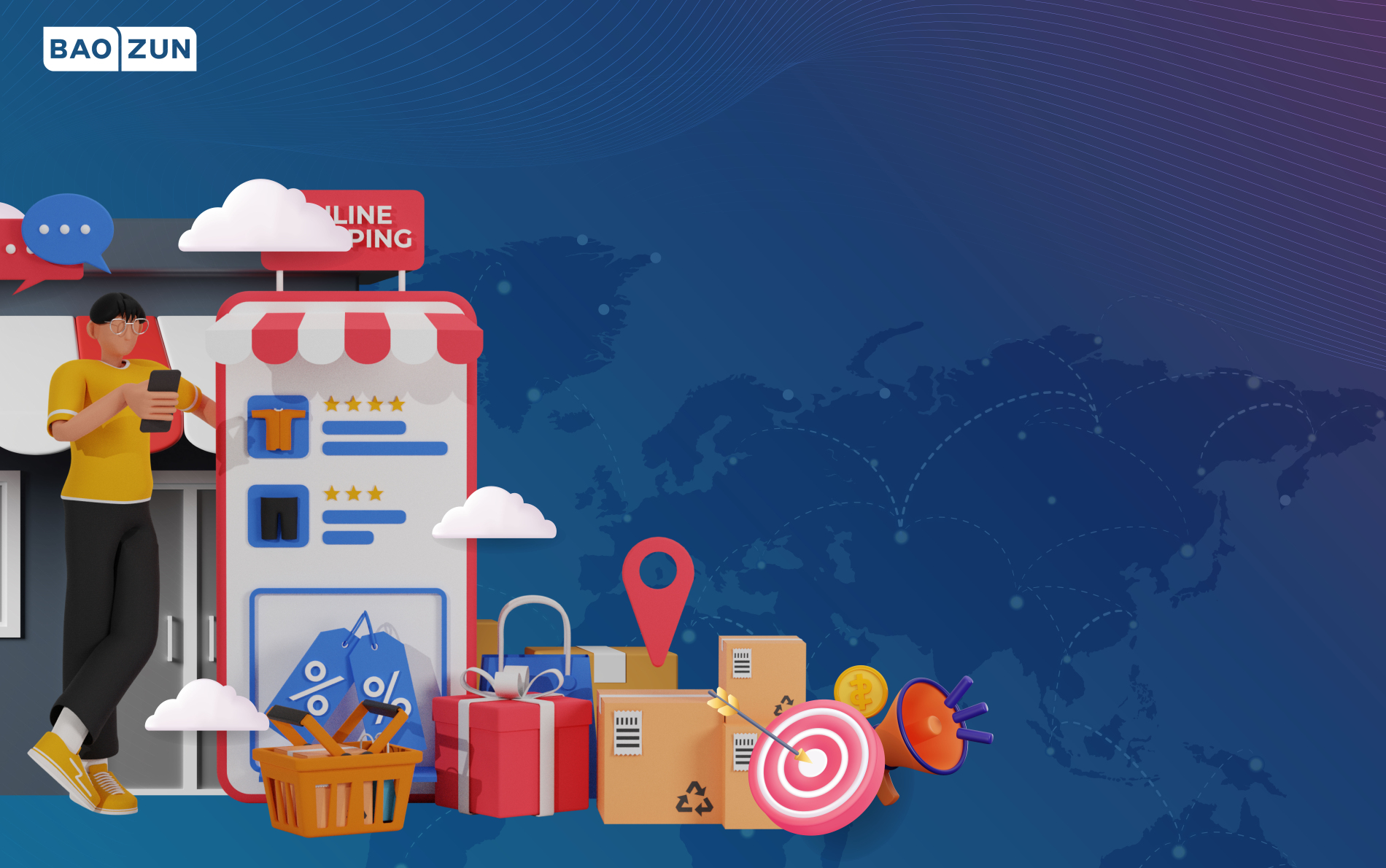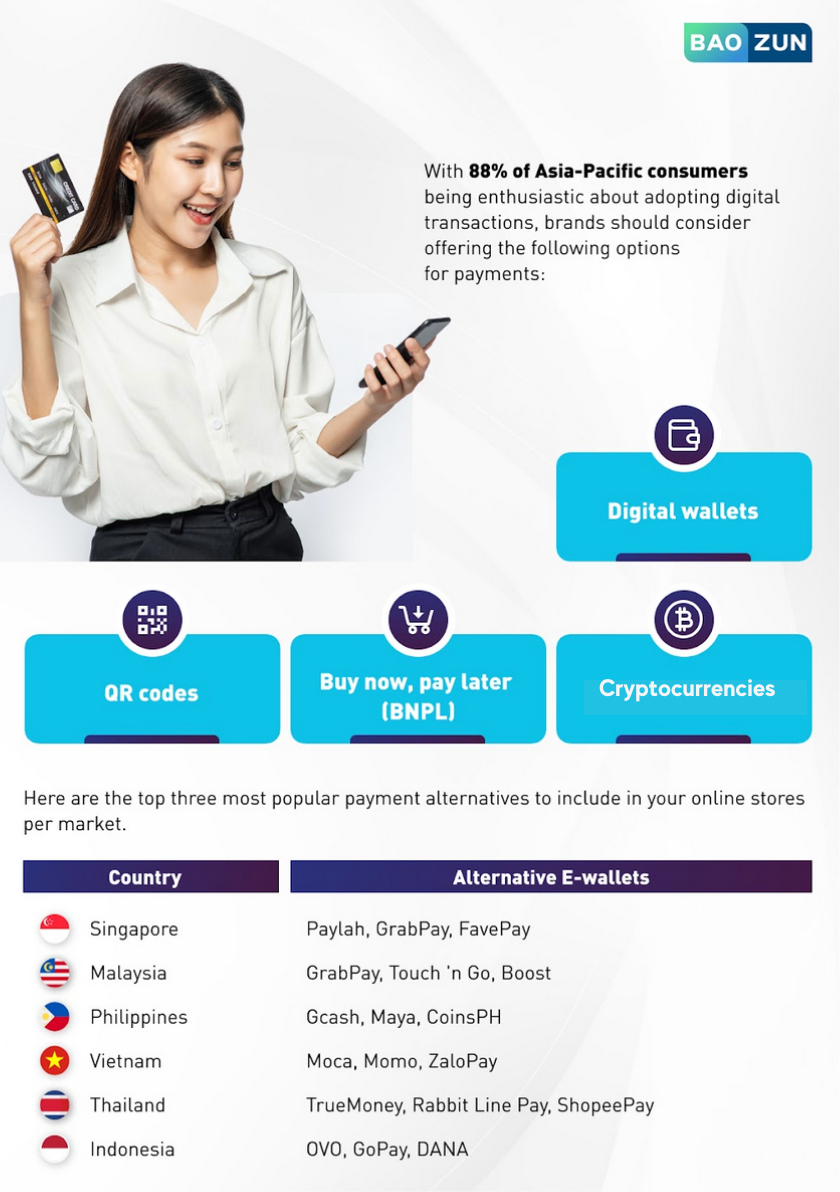
FEATURED ARTICLE
Localisation In Southeast Asian Markets: How To Tailor For Optimised eCommerce Experience In 2023
Baozun Asia
Jun 05· 7 Min read

Localisation In Southeast Asian Markets: How To Tailor For Optimised eCommerce Experience In 2023
Baozun Asia
Jun 05· 7 Min read
With the increasing digitisation of infrastructures and daily living, online shopping has eradicated geographical limitations and made cross-border commerce a common denominator in every consumer’s life. Projected to triple at a compound growth of 22%, Southeast Asia’s eCommerce market will reach $230 billion in gross merchandise volume by 2026.
However, this region is a mosaic of economies at different stages of development and cultural diversity that continues to shape consumer preferences and perceptions. It’s natural for eCommerce penetration to vary across different markets.
The shift from low-value Chinese imports to diversifying their sourcing channels to include more homegrown/regional brands heralds a new era of embracing a more localised experience in their shopping journey. Retailers must tap into the rich tapestry of Asian cultures and design customised end-to-end experiences that drive meaningful connections, translating into sales.
Read More...With the increasing digitisation of infrastructures and daily living, online shopping has eradicated geographical limitations and made cross-border commerce a common denominator in every consumer’s life. Projected to triple at a compound growth of 22%, Southeast Asia’s eCommerce market will reach $230 billion in gross merchandise volume by 2026.
However, this region is a mosaic of economies at different stages of development and cultural diversity that continues to shape consumer preferences and perceptions. It’s natural for eCommerce penetration to vary across different markets.
The shift from low-value Chinese imports to diversifying their sourcing channels to include more homegrown/regional brands heralds a new era of embracing a more localised experience in their shopping journey. Retailers must tap into the rich tapestry of Asian cultures and design customised end-to-end experiences that drive meaningful connections, translating into sales.

eCommerce localisation is the process of taking an online store’s existing content and channels and personalising it for the specific needs, preferences, and cultural context of a target market.
Often, these include the following:
Integrating the unique cultural nuances into the consumer journey would establish an authentic connection with each audience.
Expected to reach $1.2 trillion by 2025, Southeast Asia eCommerce scene is the prime market for growth and here’s what you need to know about the region:
Diverse Cultures & Shopping Behaviours:
This region is highly fragmented (e.g. shopping behaviour, culture, economic profile, smartphone adoption), with a large unbanked population, especially in emerging markets such as Indonesia, Thailand, and Vietnam. Only 27% of the 670 million inhabitants have a bank account.
Yet Southeast Asia is also leading in digital consumption, with 60 million new digital consumers since the pandemic. By 2030, 75% of the consumers will be under the age of 30. These shoppers are mobile-first, digitally savvy, and going through pivotal life stages such as getting their first job or house, marrying, or having their first child.
Despite being geographically close, each market can show differing habits. Where the average Vietnamese consumer spends 10% of their disposable income on online shopping, Thai people spend 5%. In Thailand, 52.6% of shoppers use Lazada, whereas it is only used by less than 20% of online shoppers in Vietnam.
Understanding and adapting to the diverse regional habits and cultures within ASEAN is essential. Each country has its own set of traditions and social norms that shape consumer behaviour. There is a need to adapt product offerings and marketing activities to enhance brand relevance and resonance throughout the various markets in the region.
Varying Payment Infrastructures and Preferences:
Nearly 90% of Southeast Asians use digital wallets or other forms of e-payment, with Thailand leading in digital payments adoption with 94% of consumers. Moreover, increasing disposable income and smartphone penetration have accelerated the transition toward adopting digital payments. Still, payment preferences vary widely in the region:
Even as alternative payment methods are on the rise, each market offers its own suite of e-solutions that comes with its own infrastructure. Localisation of payment infrastructures is necessary to cater to the different markets.
Differing Standards For Logistic Infrastructure:
ASEAN's logistic landscape poses unique challenges due to varying infrastructures, transportation networks, and customs regulations across countries. In the Philippines, the archipelagic geography presents difficulties in last-mile delivery to remote areas.
In comparison, Singapore boasts a highly developed logistics infrastructure and efficient transportation networks, enabling businesses to enjoy faster and more reliable delivery services to support eCommerce activities.
When it comes to cross-border eCommerce, navigating trade agreements and customs procedures is essential for smooth operations. The ASEAN Trade in Goods Agreement (ATIGA) promotes trade facilitation and tariff reduction among member countries. However, each country still has its own specific regulations and requirements that businesses must comply with.
Language Localisation on Platforms
Within the region, Indonesia and Thailand are the fastest growing eCommerce markets with a projected growth of 44% and 25%, respectively. These are countries with their native tongue as their primary language. Recently, Bahasa Indonesia has been ranked among the top 10 languages used on the internet.
A simple translation is not enough. Localisation accounts for cultural differences, regional preferences, and local regulations to ensure every element is meticulously tailored to communicate as if it was designed for the domestic market.
75% of consumers prefer shopping in their native language, and 60% rarely or never purchase from an English-only website. Engaging with customers in their native tongue speaks volumes in shifting customer engagement and sales.
Lazada provides multilingual support across its platforms, including local language options for product descriptions, customer service, and marketing content. This approach has helped Lazada gain a strong foothold in diverse markets like Indonesia, Malaysia, and the Philippines. Sales went up by 20% in Indonesia, 15% in Malaysia, and 10% in the Philippines in the first quarter of 2022.
Diverse Payment Methods and Localised Currency
BCG reported that 49% of urban consumers, who are commercial bank customers, already use e-wallets in their lives. This number is expected to reach 84% by 2025. Online retailers offering local payment options generate 22% more in regional revenue than those without. Despite this, only 1.8% of international merchants believe that customers want these local methods.

Price is a major deciding factor in the purchasing journey. People want to pay in the local currency that’s most familiar to them and not be slapped with currency conversion and transaction fees by their bank. We observed a 40% increase in conversion rates for online stores that localise currencies on their product pages.
Integrate Social Commerce
Southeast Asia’s eCommerce market is expected to generate $42b in 2023. Of this, $34b will be from social commerce, comprising of:
Southeast Asians have a strong desire to belong, and building relationships is more important to them than their global counterparts. It’s no surprise that revenue is driven by social and relational aspects such as real-time communication, authenticity, trust, and community.
Brands must harness the power of social commerce by seamlessly integrating social features (e.g. live streaming, user reviews, and interactive content) to create an immersive shopping experience.
Apart from Christmas, brands can take advantage of the numerous local festivities to host live shopping events. Since Southeast Asian shoppers’ purchasing decisions are heavily influenced by feedback and celebrity endorsement, employing local influencers would offer added credibility and contextual relevance.
Live selling is a rising trend, with platforms like Lazada, Shopee, and Facebook integrating shopping and entertainment through features like Shoppertainment Live. Utilising celebrities and influencers, these platforms have experienced significant growth, with 200% year-on-year growth in the Philippines. Additionally, in Vietnam, TikTok Shop generated VNĐ1,686 billion in total revenue, with 13 million products sold by 32,000 sellers, as reported by Metric.vn.
Localisation goes beyond simply translating content. It involves customising the user experience, interface, and functionalities to align with the local market's expectations. This might pose a challenge in Southeast Asia as there is no one major player due to the segmented market. Hence, it is vital that brands find a partner with strong technical expertise and knowledge of the local market.
With a strong focus on technology integration, operation, and digital marketing efforts, as well as logistics and last-mile solutions, Baozun Asia covers the full suite of eCommerce services to ensure brand success on both the front and back end. By leveraging our tech capabilities, brands can streamline inventory and operational processes while enhancing user experience to generate sales. Connect with us for tailored solutions to navigate the region.
Read Less...